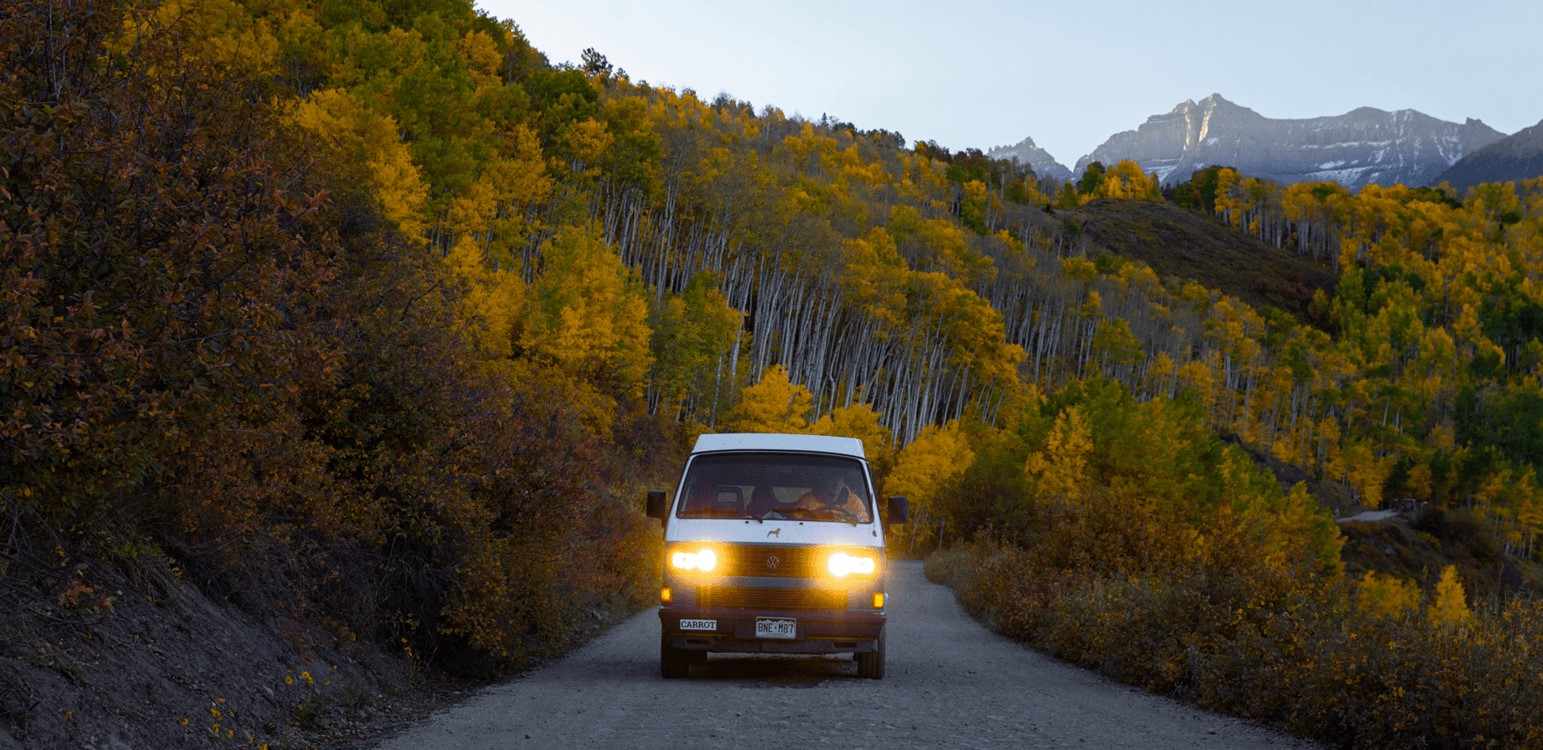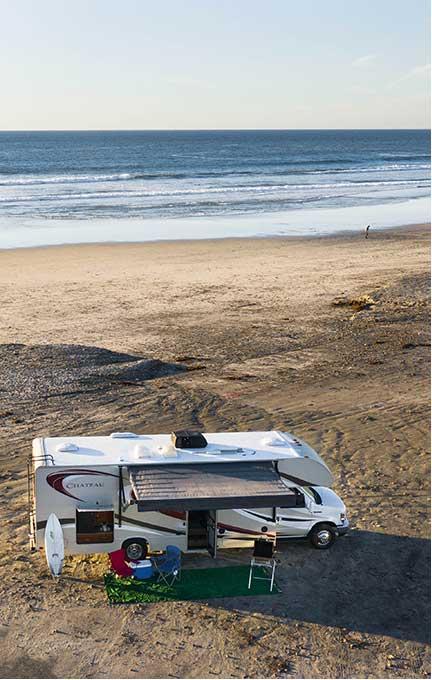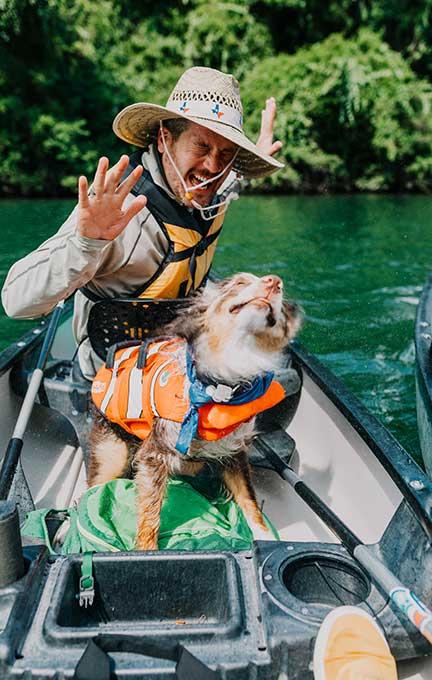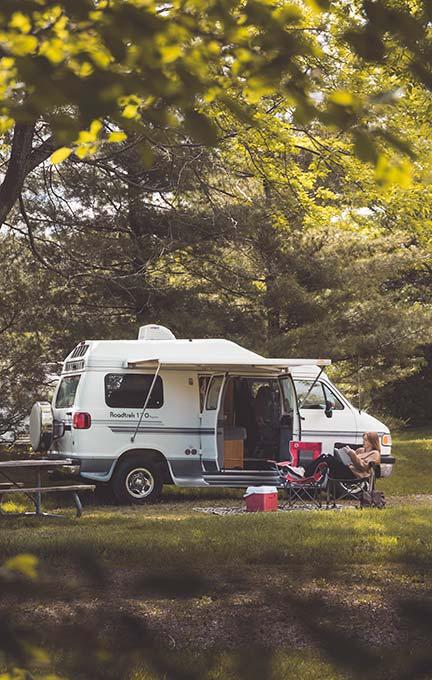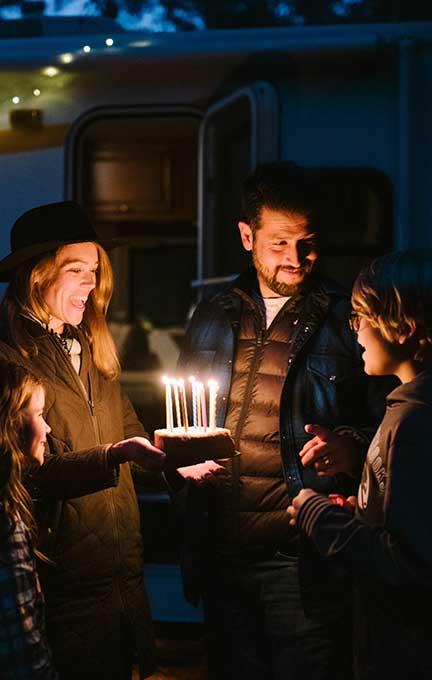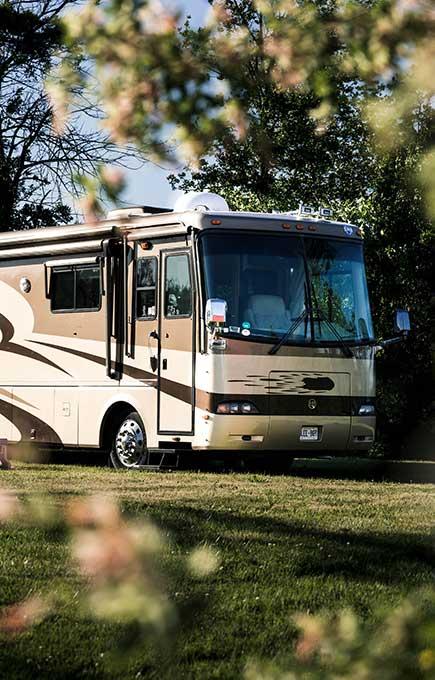Usually, campers and hikers depend on firestarting kits to get a fire going. The drawback of using these tools is that they tend to get wet, run out of fuel, or not work when you need them most. Having the capacity to light a flame without matches or a lighter is a fundamental survival skill. You don’t know when you’ll get yourself in a situation where you’ll need fire. And even if you don’t plan on straying far from civilization on your road trip, knowing how to start a fire the old-fashioned way makes a great party trick to impress whoever you take camping.
This article will cover some ways to start a fire without matches and lighter. Keep in mind that fire must have three components to work: fuel, air, and a spark. Here are the top 6 ways to start a fire in the wild.
RVs For Rent Near You
1. The Hand Drill
If you’re wondering how to start a fire with sticks, you’ll want to try the hand drill. The hand drill strategy is a primitive method and the hardest to do. Shaft revolution and descending weight are two of the most imperative prerequisites for starting a hand drill fire. This method will require wood, resolute hands, and gritty determination.
- Make a tinder nest. The tinder nest is necessary to get the fire going. A tinder nest can be made from things that burst into flames effectively, such as to dry leaves, grass, and bark. For more hints on how to pick out the best wood, check out our campfire tips and tricks.
- Make your notch. Cut an angular notch on your fireboard and create a depression near it.
- Place bark below the v-shaped cut. The bark is used to get an ember from the erosion between the axle and fireboard.
- Start spinning. Place the shaft into the groove on your fireboard. Your shaft ought to be around two feet to work well. Keep up the weight on the fireboard and start to roll the shaft in your hands rapidly down the axle. Continue doing this until an ember lights on the fireboard.
- Start a fire. When you see a shining ember, tap the fireboard to place your ember onto the bit of bark. Exchange the bark to your nest of tinder. Slowly blow it to get yourself fire.
2. Fire Plow
The fire plow is another common method using minimal tools. All you’ll need is a softer wood for the plow board and a harder wood for the plow. Willow and poplar make good plow board material.

- Set up your fireplace and cut a groove about one inch wide and six to eight inches long down the board. Find a piece of hardwood about one foot long and carve it to a point at the end.
- Rub. Take the head of your plow and place it on your fireboard. Begin rubbing the tip of the plow back and forth in the grove. This will create small pits of dust.
- Raise the board. Raise the top of the board and rest it on your knee, so that the dust collects at the bottom.
- Intensify the motion. Once a small pile of dust has collected at the bottom, rub the plow quickly and with force in the groove until the dust smolders.
- Transfer the flame to the tinder. Once the dust is alight, transfer it to the tinder and gently blow to start your fire.
3. Bow Drill

The bow drill is presumably the best contact-based technique to use because it’s less demanding to keep up the rate and weight required to create friction that can produce fire. However, it does require the most materials. The items you’ll need for this method are:
- Fireboard: A flat, softwood board about a foot long and at least six inches wide.
- Socket: A hand-sized, flat rock with a depression on one side. This is used to put weight on the top of the drill as you’re turning it with the bow.
- Drill: No, not a power drill! We’re talking a sturdy hardwood stick between one and two inches in diameter and about a foot long.
- Bow: A sturdy, yet flexible green stick about two feet long and one inch in diameter.
- Cord: If you don’t have any paracord handy, hiking boot laces make a great cord.
Once you’ve gathered your materials, follow these steps to start the fire.
- Make your bow: The bow ought to be about the length of your arm. Bend the bow into a half-moon shape and tie it into position with the cord.
- Set up the fireboard. Cut a shallow depression on the center edge of the fireboard. On the underside of the board, notch a V-shaped cut that meets the depression on top.
- String up the drill. Circle the bowstring around the drill. Place the drill on the fireboard then apply some pressure on the other side with your socket.
- Start sawing. Using your bow, move the drill by doing a sawing motion. The drill should pivot rapidly. Continue sawing until you make an ember.
- Start a fire. Put ember into the nest and slowly blow on it to get yourself fire.
Video source: National Geographic
4. Stone and Steel
Here’s how to start a fire without matches, lighters, or sticks! Using a flint is a traditional standby and is presumably a standout amongst the most solid and simple approaches to start an open-air fire. You might even see folks using this to start a fire at an ordinary campground. It’s generally a smart idea to carry a steel and flint with you on an outdoors trip. It is utilized by various armed forces the world over.
- Make a tinder nest. This nest will be used to catch the spark that you make with the flint and steel.
- Grab your starters. Grip the steel in one hand while taking the striker in the other.
- Strike. Position the fire steel against your base to keep it from moving. At that point push the striker down the length of the fire steel in one smooth movement.
- Start a fire! Place the ember in the nest and slowly blow it to get yourself a fire.
5. Batteries and Steel Wool
With this strategy, all you need are a few batteries and steel wool.
- Stretch out the wool. You need it to be around 6 inches in length and at least an inch wide.
- Rub the battery on the steel wool. You can use any battery; however 9-volt batteries are recommended. Rub the battery sides with the steel. The wool will start to gleam and blaze.
- Place the blazing wool on the tinder nest and slowly blow it to get a larger fire.
6. Traditional Lenses

With this approach, all you need is some kind of lens to center daylight on a particular spot. A magnifying glass or binocular lens both work.
- Get your tinder ready.
- Hold the magnifying glass between the sun and the tinder. Look for the bright dot that appears. Tilt the magnifying glass so that the dot is over the tinder and about a quarter-inch in diameter.
- Focus the dot for 30 seconds to a minute. As with other methods of fire starting, patience is key! Once the tinder starts smoking, gently blow to get the flame going.
Campfire Safety Tips
Campfires are a lot of fun, but safety must be a top priority to prevent accidents or wildfires. Here are key safety tips to keep in mind:
- Choose the Right Location: Always build your fire in designated fire pits or rings, where possible. Clear a 10-foot radius around the fire of debris, dry leaves, and grass. If a fire ring isn’t available, create a boundary of rocks to contain the fire.
- Control Fire Size: Keep your fire small and manageable. Large fires are harder to control and pose a higher risk of sparks flying into surrounding areas. Avoid using accelerants like gasoline, which can cause flare-ups and are difficult to control.
- Supervise the Fire: Never leave a campfire unattended. Even a small fire can quickly get out of control if left alone. Always keep a bucket of water, a shovel, or a fire extinguisher within reach to address any emergencies.
- Watch for Wind: Wind can carry embers away from the fire pit and start unintended fires. If it’s a particularly windy day, consider postponing your campfire until the wind dies down. Keep a close eye on any shifting wind patterns during the fire.
- Extinguish Properly: Before going to sleep or leaving the campsite, make sure the fire is fully extinguished. Pour water on the fire, stir the ashes with a shovel, and repeat until the fire is completely cool to the touch. Never bury a fire, as it can continue to smolder and reignite.
- Follow Local Regulations: Be aware of any local fire bans or restrictions, especially in dry areas prone to wildfires. Always follow campground or park guidelines.
By following these safety practices, you can enjoy your campfire while ensuring the safety of yourself, your fellow campers, and the environment.
Campfire FAQ
Have more questions before you go out and build a fire? The answers below might help!
Can I build a campfire anywhere?
No, you should only build campfires in designated fire rings or pits. Always check local regulations, as some areas may have fire bans in place due to dry conditions.
What materials should I use to start a campfire?
Use dry wood, kindling, and newspaper or fire starters. Avoid using flammable liquids like gasoline.
How do I properly extinguish a campfire?
Douse the fire with water, stir the ashes, and pour more water until everything is cool to the touch.
How close can I camp near a fire?
Make sure to keep tents, chairs, and other camping gear at least 15 feet away from the fire to avoid any accidents.
Can I use any type of wood for a campfire?
It’s best to use dry, seasoned wood for your campfire. Wet or green wood creates more smoke and doesn’t burn as efficiently.
Conclusion
Learning to light a campfire without a lighter or matches takes a lot of practice. You should never wait till you are in an emergency life or death situation to give them a try. Keep on practicing, and always remember your basic campfire safety!
Ready to camp?

